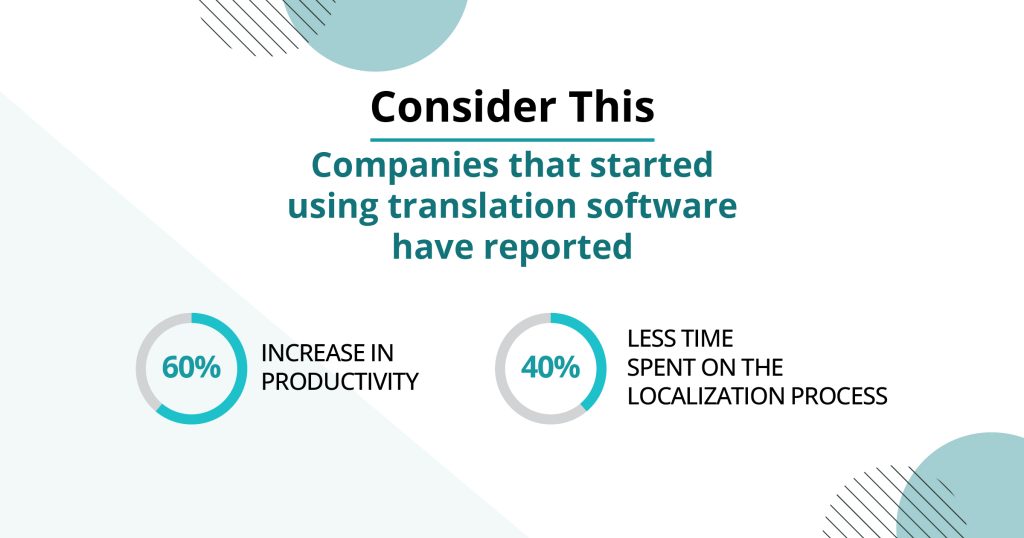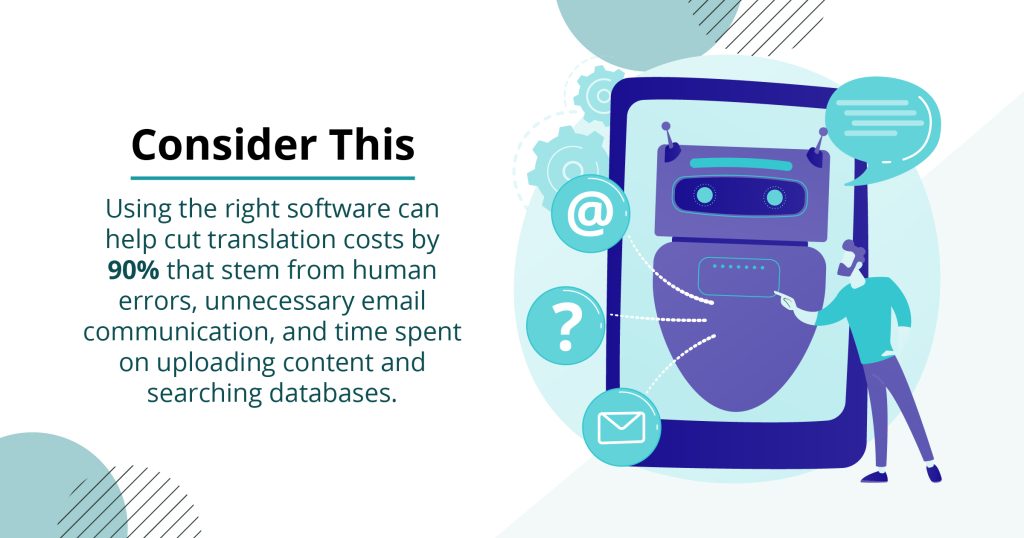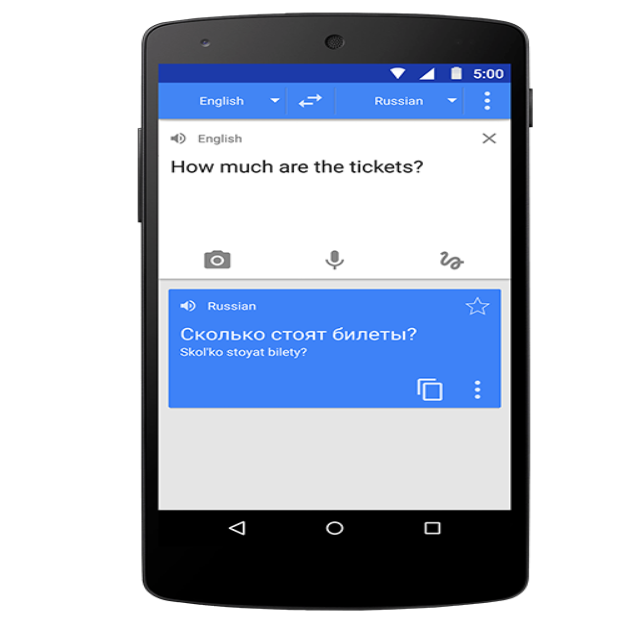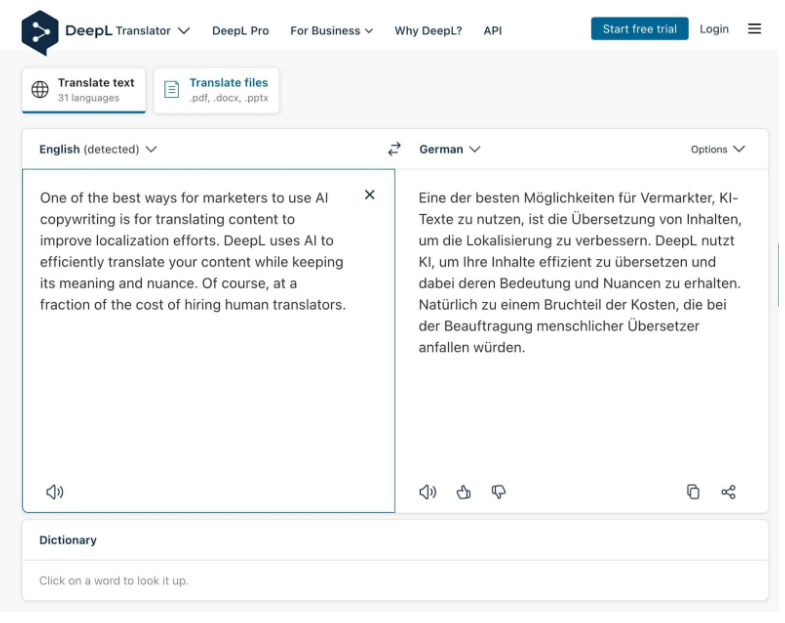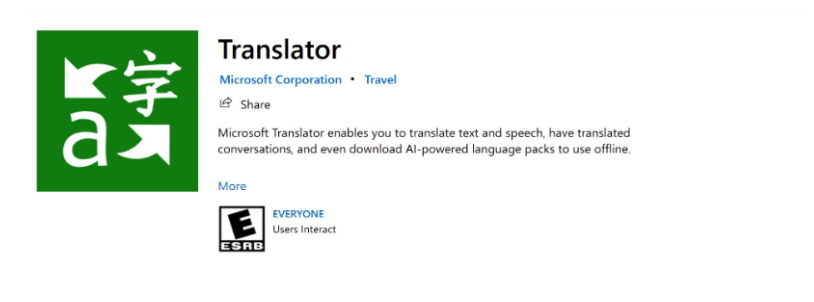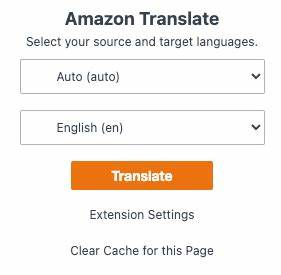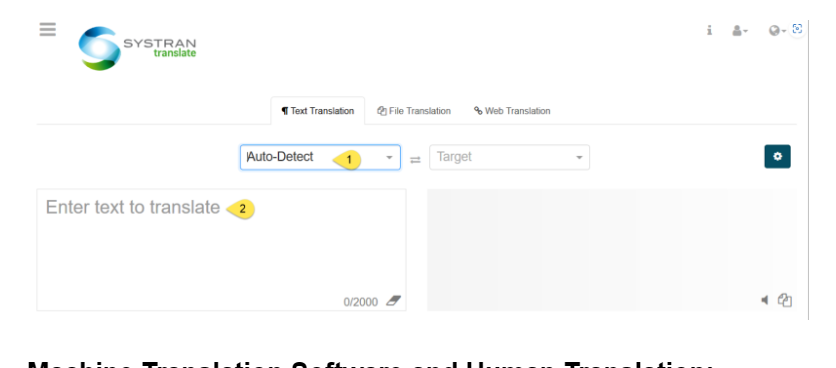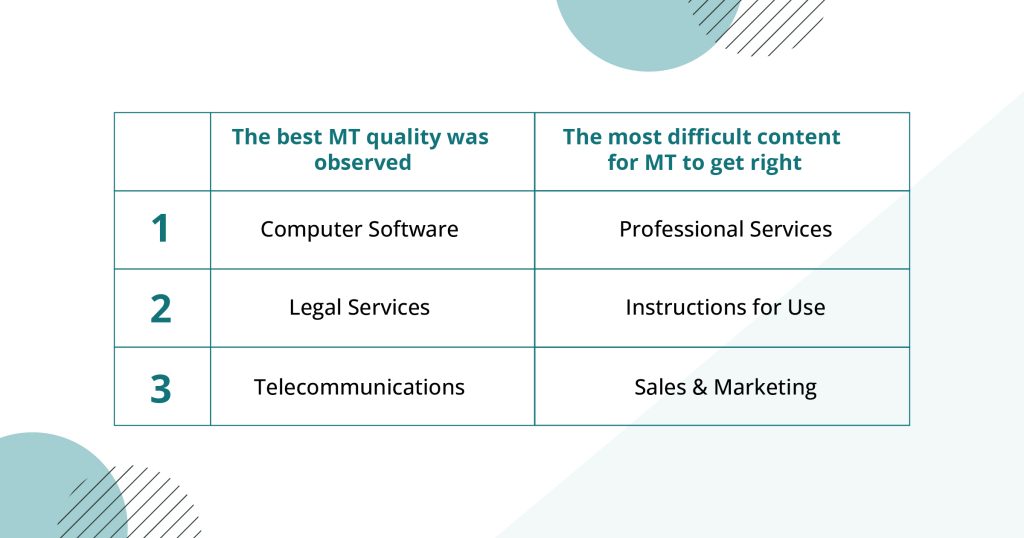A Comprehensive Guide to Machine Translation Software
In recent years, translation has evolved from a manual process to a technologically driven field. The introduction of computer-assisted translation tools, particularly those integrating machine translation and cloud-based solutions, revolutionized the translation industry.
With the right software, businesses can now cut translation costs by up to 90% thanks to the translation memory options that save time and effort. But how do you choose the best tool for your needs?
Our blog post analyzes top machine translation software, helping you make an informed decision to boost your business’s global success. We’ll explore:
- Benefits of machine translation software
- The top 5 popular translation software tools
- Finding the right balance between machine and human translation
What Is Machine Translation Software and How Does It Work?
Machine translation software is a technology that uses artificial intelligence and natural language processing to automatically translate text or speech from one language to another.
It works by analyzing the input text, breaking it down into smaller units, and then generating a corresponding translation in the target language. This process involves sophisticated algorithms that consider context, grammar, and language rules to produce accurate translations.
There are different types of machine translation including regular-based translation and statistical machine translation and others, each has its unique approache.
However, all machine translation software can operate in real-time, making it an efficient tool for overcoming language barriers in various communication scenarios.
Let’s see how this software is beneficial for your business growth.
Benefits of Machine Translation Software
Wondering why you might need machine translation software for your business? You’re not alone. Many companies ask:
- What can this software do for us?
- How will it help our business grow?
- Is it worth the investment?
In this section, we’ll answer these questions and more. We’ll break down the main three benefits of machine translation software in clear, simple terms so you can have a good idea of how this technology could help your business communicate better across languages.
1. Speed and Efficiency:
Machine translation software offers significant benefits in terms of speed and efficiency. It can rapidly translate large volumes of text, making it ideal for projects with tight deadlines or extensive content requirements. Businesses can manage urgent tasks and high workloads effectively, as machine translation processes translations at scale.
Additionally, some machine translation tools offer instant translations, which greatly facilitate real-time communication and collaboration. This feature is especially useful in global teams where quick responses are crucial, enabling clear communication and collaboration.
However, it’s important to note that while machine translation is fast and scalable, it may sometimes struggle with specialized or nuanced content, where a deeper understanding is essential.
2. Cost-Effectiveness:
Machine translation tools can significantly reduce translation costs compared to human translators, especially for large volumes of text or less critical content. By automating the translation process, businesses save on the expenses associated with hiring professional translators.
This makes it an economical choice for projects that require quick turnaround or involve non-sensitive and non-specialized material. Additionally, the reduced costs allow companies to allocate resources more effectively, focusing human expertise on post-editing critical content where precision is paramount only.
 3. Accessibility and Scalability:
3. Accessibility and Scalability:
Most machine translation software offers extensive language support, allowing businesses to translate their content into dozens or even hundreds of languages. This feature is incredibly valuable for companies operating on a global scale or targeting multilingual audiences.
By leveraging machine translation software with broad language support, businesses can effectively communicate with customers, partners, and employees around the world, breaking down language barriers and expanding their reach across diverse linguistic communities.
So everything is clear now on how these software tools always advance in terms of machine learning and making content clearer and consistent!
But what are the leading machine translation software that businesses can benefit from using? That’s what we will discover in the next section!
Top 5 Most Popular Machine Translation Software
Choosing the right machine translation software for your business requires a comprehensive understanding of the available tools. In this section, we’ll break down the top 5 most popular options, highlighting their strengths, weaknesses, and key features. Having the opportunity to compare these tools side-by-side, you’ll be equipped to make an informed decision that aligns with your specific needs.
Let’s start!
1. Google Translate:
Obviously, no one in the world hasn’t tried using Google Translate once at least for different purposes. While Google Translate contains over 100 languages, its accuracy level is questionable in some language pairs ranging from 55% to 94%.
Among AI translation tools, Google Translate stands out for its accessibility. Its user-friendly interface simplifies the translation process; users can select their languages, input text, and receive instant translations with a single click.
Google Translate employs neural machine translation technology for its core functionality. While the standard version is freely available, the Translation API Advanced option provides enhanced customization features, allowing users to incorporate industry-specific terminology and domain-related jargon.
Strengths
- Wide language support
- Free accessibility & paid customized options
- Integration with Google products
- Continuous improvement through NMT
Weaknesses
- Its accuracy varies depending on the language pair & content type
- Its privacy is questionable sometimes for sensitive data
2. DeepL Translator:
The second most popular among businesses and individuals alike is DeepL Translator, which is claimed to be the world’s most accurate translation tool. It employs deep learning techniques to capture subtle language nuances, resulting in precise and natural-sounding translations. The tool retains original document formatting and allows users significant control over the automatic translation process.
Strengths
- High-quality outputs particularly for European languages and unlimited text translation
- Customization options for formality and domain-specific terminology
- Intuitive interface that seamlessly integrates with Windows and iOS.
Weaknesses
- Limited language support where there are only 28 languages available (primarily European)
- Free version limitations and restrictions on file translation capabilities
 3. Microsoft Translator:
3. Microsoft Translator:
Microsoft Translator, launched in 2009, has significantly improved in recent years. It is a neural machine translation service that supports over 100 languages, offering enhanced accuracy and versatility for diverse translation needs. It’s deeply integrated into Microsoft’s ecosystem as a free version, offering translation capabilities across various products like Office, MS Teams, Skype, and LinkedIn.
It also offers a standalone mobile app, available for both iOS and Android, providing additional features such as image-based translation of street signs and quick access to common phrases for daily conversations.
Microsoft offers a comprehensive suite of translation services for businesses through its paid Azure Cognitive Services Translator subscription. This advanced platform goes beyond basic text translation, providing features such as full document translation, REST API access, and AI Container deployment.
A key advantage is the ability to customize machine translation models, allowing organizations to tailor the service to their specific needs and terminologies.
Strengths
- Wide language support
- Integration with Microsoft products
- Strong focus on data security and compliance
- Translate text or speech and Image recognition translation capability
Weaknesses
- Performance can vary across different languages
- Advanced features might be limited in the free version
- Dependency on Microsoft’s ecosystem may not suit all users
- May struggle with nuanced language or slang
4. Amazon Translate:
Amazon Translate is a cost-effective machine translation solution ideal for organizations with evolving translation needs. It offers Active Custom Translation for fine-tuning translations without the complexity of building a model from scratch.
The service can automatically detect the source text language and supports 75 languages and 5,550 translation combinations, with an API for bulk translation of various content formats.
The pay-per-use pricing model is economical for businesses with fluctuating translation volumes. However, integrating Amazon Translate requires coding expertise.
Some users have reported occasional issues with translation accuracy and mechanics, but overall, it remains a powerful and scalable translation tool.
Strengths
- Cost-effective pricing
- Active custom translation feature
- Automatic language detection
- Support for various content formats
Weaknesses
- Requires an AWS account,
- Integration can be complex
- Occasional accuracy issues.
5. Systran Translate:
Systran Translate is a reputable machine translation tool one of the oldest in the market that has gained recognition for its accuracy and efficiency. It employs advanced artificial intelligence and natural language processing to provide high-quality translations across multiple languages.
The software’s ability to handle large volumes of text rapidly makes it an ideal choice for businesses with extensive content requirements or tight deadlines. Its cost-effectiveness and the ability to reduce translation costs compared to human translation make it an economical choice for various projects.
Systran stands out as the sole open-source option among major machine translation platforms, granting users enhanced flexibility and customization in software programming. This unique feature allows for greater adaptability to specific needs. Currently, Systran offers support for 50 languages, providing a substantial range of translation capabilities.
Strengths
- Long history and experience in MT
- Focus on hybrid translation
- Open-source collaboration, and customization options for specific needs
Weaknesses
- May not be as widely known as other providers
- Specific strengths and weaknesses depend on the chosen Systran product.
Machine Translation Software and Human Translation: Finding the Right Balance
While machine translation is an important part of the translation workflow, facts show that its quality can vary across industries, performing better in some than in others.
So this means that you will always need a highly attentive eye of professional human translators in the game for highly accurate translated documents.
To make things clear, let’s break down when machine translation is suitable and when human translators are needed
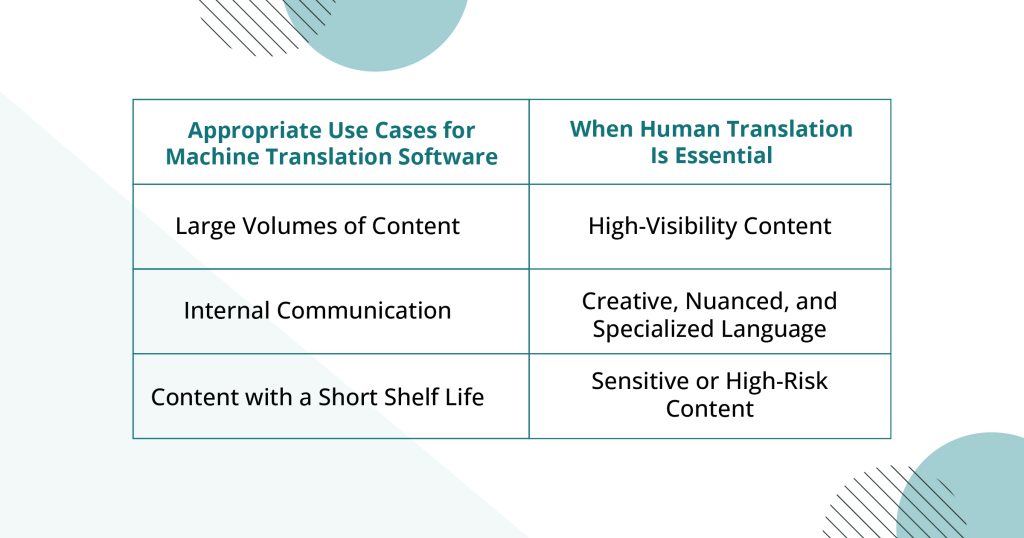
Now, what should you do to benefit from the efficiency, speed and cost-effectiveness of MT and avoid its quality drawbacks for certain types of content?
Invest in Machine Translation Post Editing.
MTPE combines the speed and efficiency of machine translation with the accuracy and natural fluency of human translation. This approach offers a cost-effective and high-quality solution for various translation needs.
This process ensures that the final product maintains the intended meaning, cultural nuances, and readability. It’s particularly beneficial for projects requiring both rapid turnaround and high accuracy, striking a balance between efficiency and quality.
Laoret Your Optimal Language Service Provider Choice
Machine translation and post-editing are essential for efficient global communication. When selecting a translation tool, consider language pairs, content volume, customization needs, integration capabilities, budget, and quality requirements.
While machine translation streamlines processes, professional language service providers remain crucial for cultural adaptation and high-stakes accuracy.
At Laoret, we offer AI-augmented solutions in over 120 languages, blending AI efficiency with human expertise. This MTPE service approach delivers high-quality translations more efficiently and cost-effectively than either method alone.
Experience the technological advances that drive business growth. Contact us today to optimize your global communication strategy.


